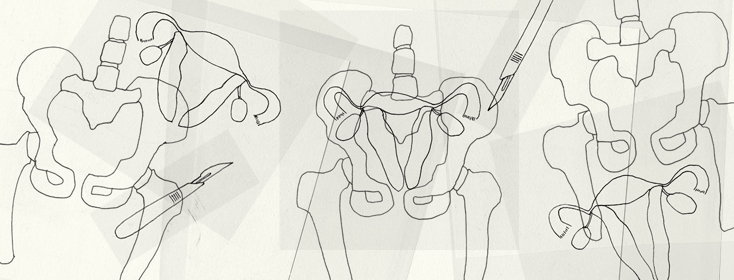A Hysterectomy for Endo? Part 2
Read Part 1 here
A source of controversy
Earlier this year, actress and show producer Lena Dunham caused a stir when she published an article in Vogue, admitting to a hysterectomy she had in a desperate attempt to relieve her extreme endo-related pain. In the weeks following its publication, the article encountered a bit of a backlash, as medical professionals noted that a hysterectomy is not a legitimate treatment for endometriosis (but again, my research as a reporter showed that nonetheless, many doctors do offer it as an option to endo patients). In particular, one article in women’s magazine The Cut interviewed the Director of the Endometriosis Center at NYU Langone Medical Center, Dr. Kathy Huang, who unequivocally stated that a person who has endometriosis should not have a hysterectomy to treat it because “It doesn’t actually fix the endometriosis”. But, Dr. Huang did say that a hysterectomy is a viable treatment option for adenomyosis.
Hysterectomy for adenomyosis
Adenomyosis is a disease in which endometrial tissue invades the muscle of the uterus itself. It is considered a separate disease from endometriosis, though I have heard many informally consider or call it “endometriosis of the uterus,” and it is more common in those with endometriosis than those without it.1 Since adenomyosis is inside the very walls of the uterus, the only way to remove adenomyosis and gain relief from the pain and heavy bleeding it causes is to remove the uterus itself. I had first heard of the condition a little over a decade ago, when I had a surgery to remove a half-dozen polyps that had taken up residence in my uterus, causing pain and pressure, mid-cycle bleeding and bladder issues. My doctor noted my uterus looked like it may have adenomyosis during the both the hysteroscopy to diagnose the polyps and the surgery to remove them.
My treatment journey
I didn’t think much about that doctor’s observations until only a couple of years ago, as I reached my latter 30s. In spring 2016, my periods had become as painful again as before my first (and only) lap. Worse than that, though, was I began getting them much more frequently- every three weeks, or even sometimes every two weeks. They had been bad enough to deal with when they were once a month, but having them twice or more a month was unbearable and began to make my life harder to plan out.
I had already tried everything I could to tame my endo, with varying levels of success- diet, herbal remedies, and exercise. In my 20s, I had tried many different hormonal contraceptives, all of which either barely helped at all or just made things worse for me or caused other complications and side effects. I had gotten my period at 10, as did my mother and grandmother, and if genetics were an indication of when I would reach menopause, it wouldn’t be till my mid-fifties- meaning another two decades of suffering. I couldn’t handle that idea. So when I visited a gynecologist last year who specialized in endo excision surgery to see about having a second laparoscopy, I mentioned my past doc’s suspicion that I had adenomyosis. This gyno said we could screen for adenomyosis via a high-resolution pelvic MRI. If it looked liked I had it, I might consider a hysterectomy along with my lap. He told me he could remove the uterus, but keep the ovaries in place, so I wouldn’t have to go into early menopause, and I could also keep my cervix in order to prevent organ prolapse and make sex more comfortable in the subsequent months.
The MRI came back positive for showing signs of adenomyosis in my uterus. At this point, I have consulted several surgeons about options, and have all but made up my mind to have a hysterectomy at some point. I am still weighing some treatment plans- but it is more an idea of when than if. At 39, I wanted to wait until I at least reach 40 before pulling the trigger. As I have known for quite some time that I don’t want biological children, that hasn’t complicated my decision- but I know for other women it would. In the meantime, I have been putting out feelers, speaking to many of those who have had the surgery. All of them so far think it was the right decision and none have any major regrets.
My decision
This experience has made me realize that ultimately the decision to have a hysterectomy lies with the individual. It’s their body and their choice. It’s equally as wrong to pressure a person to have a hysterectomy who doesn’t want it if it won’t risk their life than it is to deprive someone of it as an option- even for so-called “benign” conditions that may nevertheless be causing a lot of pain and complications.

Join the conversation